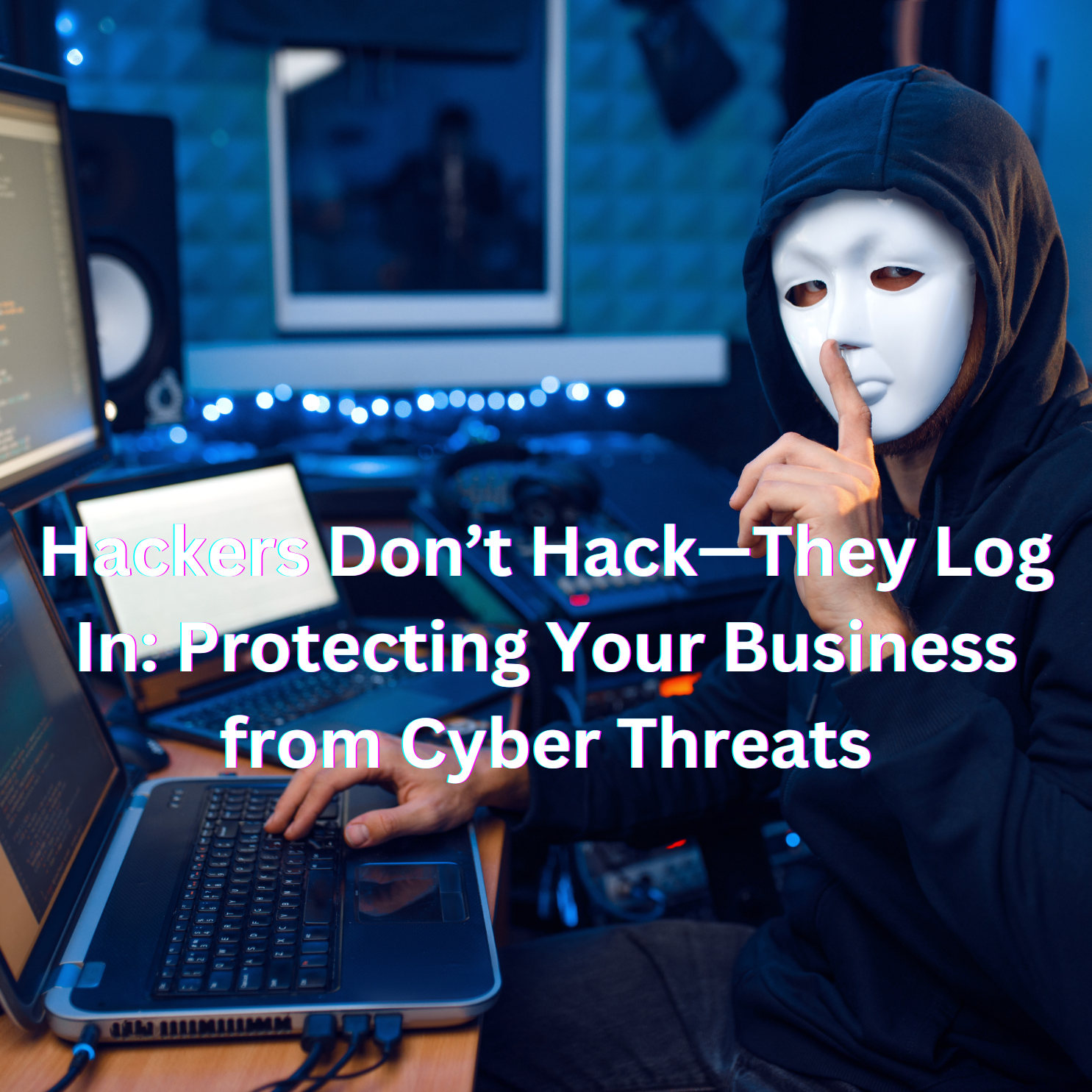

In today’s digital landscape, the biggest cyber threats to businesses don’t come from complex, movie-style hacking scenes. Instead, cybercriminals are increasingly bypassing traditional defenses by simply logging in with stolen or weak credentials. This shift in tactics underscores the need for businesses to rethink their cybersecurity strategies and adopt a proactive approach to protecting sensitive data.
The Reality of Modern Cyber Threats
Gone are the days when hackers had to break through firewalls and sophisticated defenses manually. With the rise of phishing attacks, social engineering, and credential stuffing, attackers now gain access by exploiting human vulnerabilities rather than technical weaknesses. Once inside, they can move laterally across systems, exfiltrating data and causing irreparable damage to businesses.
Common tactics used by cybercriminals include:
- Phishing Attacks: Fraudulent emails or messages that trick employees into revealing login credentials.
- Social Engineering: Manipulating individuals into providing sensitive information.
- Credential Stuffing: Using previously stolen username-password combinations to gain access to multiple accounts.
- Insider Threats: Employees or contractors misusing their access to compromise security.
Steps to Protect Your Business
To stay ahead of these evolving threats, businesses must adopt a layered security approach that goes beyond traditional firewalls and antivirus software. Here are essential steps to bolster your cybersecurity posture:
- Implement Multi-Factor Authentication (MFA):
- MFA adds an extra layer of protection by requiring additional verification steps beyond just a password.
- Regular Employee Training and Awareness:
- Educating employees about phishing attempts and safe password practices can help reduce human error.
- Use Strong, Unique Passwords:
- Encourage the use of password managers and enforce company-wide policies on password complexity.
- Conduct Regular Security Audits:
- Periodic vulnerability assessments and penetration testing can help identify weaknesses before attackers do.
- Deploy Endpoint Detection and Response (EDR) Solutions:
- Advanced EDR solutions monitor for suspicious activities and enable rapid response to potential threats.
- Monitor for Suspicious Login Activity:
- Implement tools that track and analyse login patterns to detect unauthorized access.
- Limit Access Based on Roles (Zero Trust Model):
- Restrict access to sensitive systems based on job roles and continuously verify users.
The Role of Cyber Awareness
Cybersecurity is no longer just an IT issue—it’s a business imperative. Employees at all levels must understand their role in protecting company data. A culture of cyber awareness, where security is integrated into daily operations, can significantly reduce the risk of breaches.
Conclusion
In an era where hackers prefer logging in rather than breaking in, businesses must stay vigilant and proactive. By adopting strong cybersecurity measures, enforcing best practices, and fostering a security-conscious culture, organizations can mitigate risks and safeguard their valuable assets.
Remember, cybersecurity is not a one-time effort but an ongoing commitment. Stay one step ahead, and keep it locked!
MORE BLOGS
- The Rise of AI-Generated Phishing Attacks
- Phishing scams have been around for decades, but with the…
- The Double-Edged Sword: How AI is Both Strengthening and Threatening Cybersecurity
- Artificial Intelligence (AI) is transforming the cybersecurity landscape, offering powerful…
- When Digital Forensics Are Required: Uncovering Cyber Threats with Expert Investigation
- In today’s digital landscape, cyber threats are more prevalent than…
- Stay Cyber Smart: Clyrofor Brings Cyber Awareness to Wits University
- In today’s digital world, university students are more connected than…
- Hackers Don’t Hack—They Log In: Protecting Your Business from Cyber Threats
- In today’s digital landscape, the biggest cyber threats to businesses…